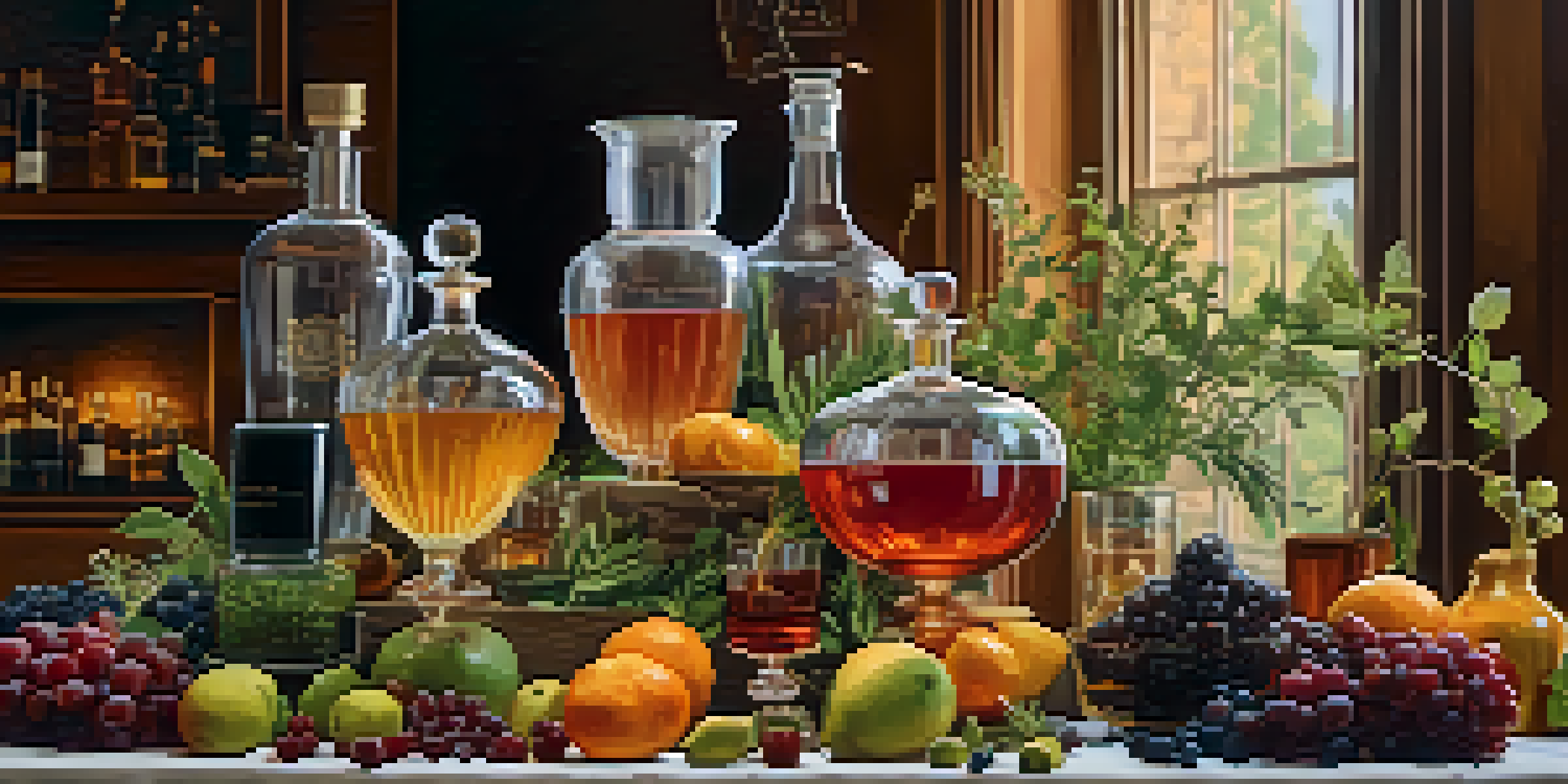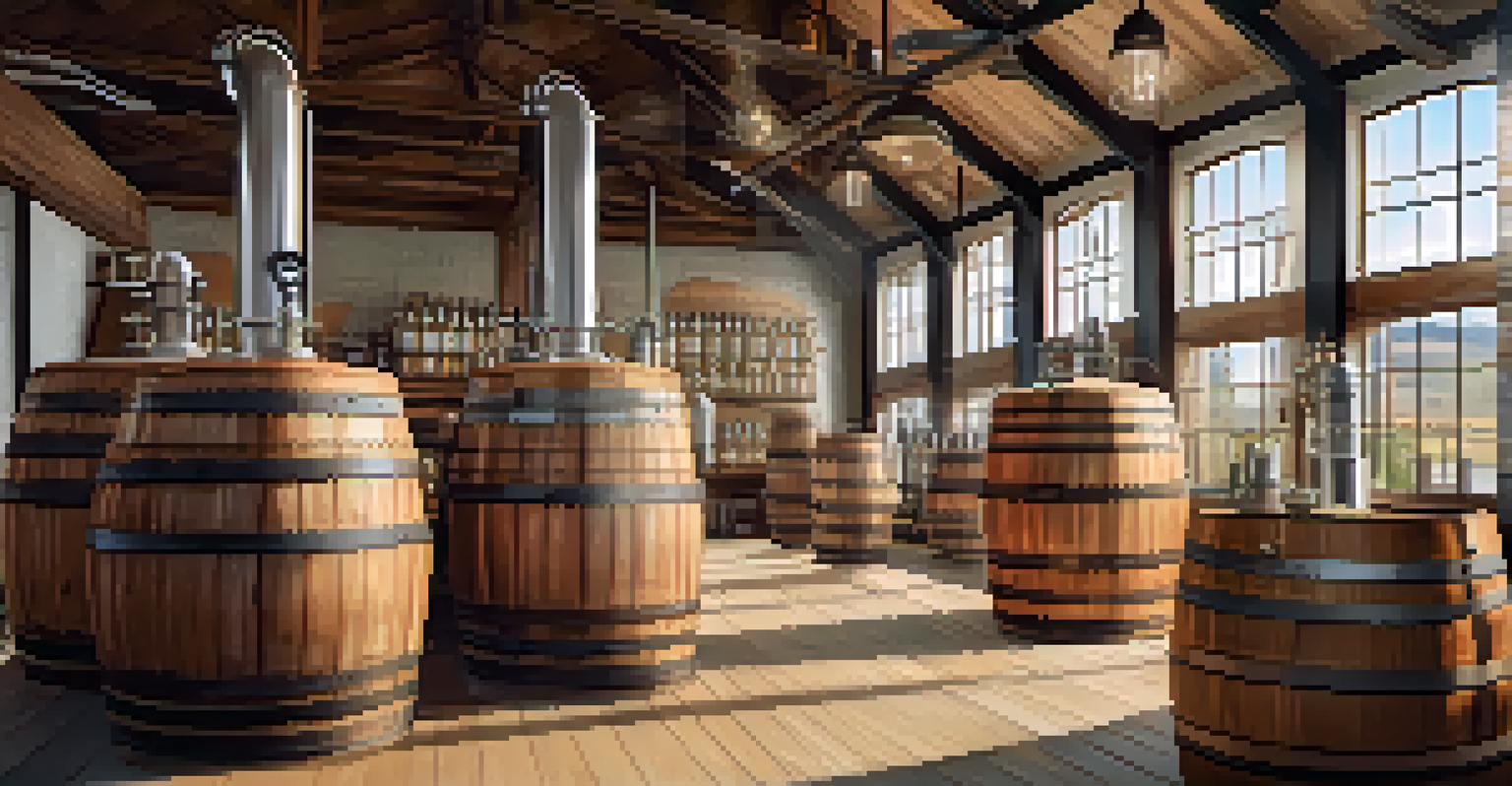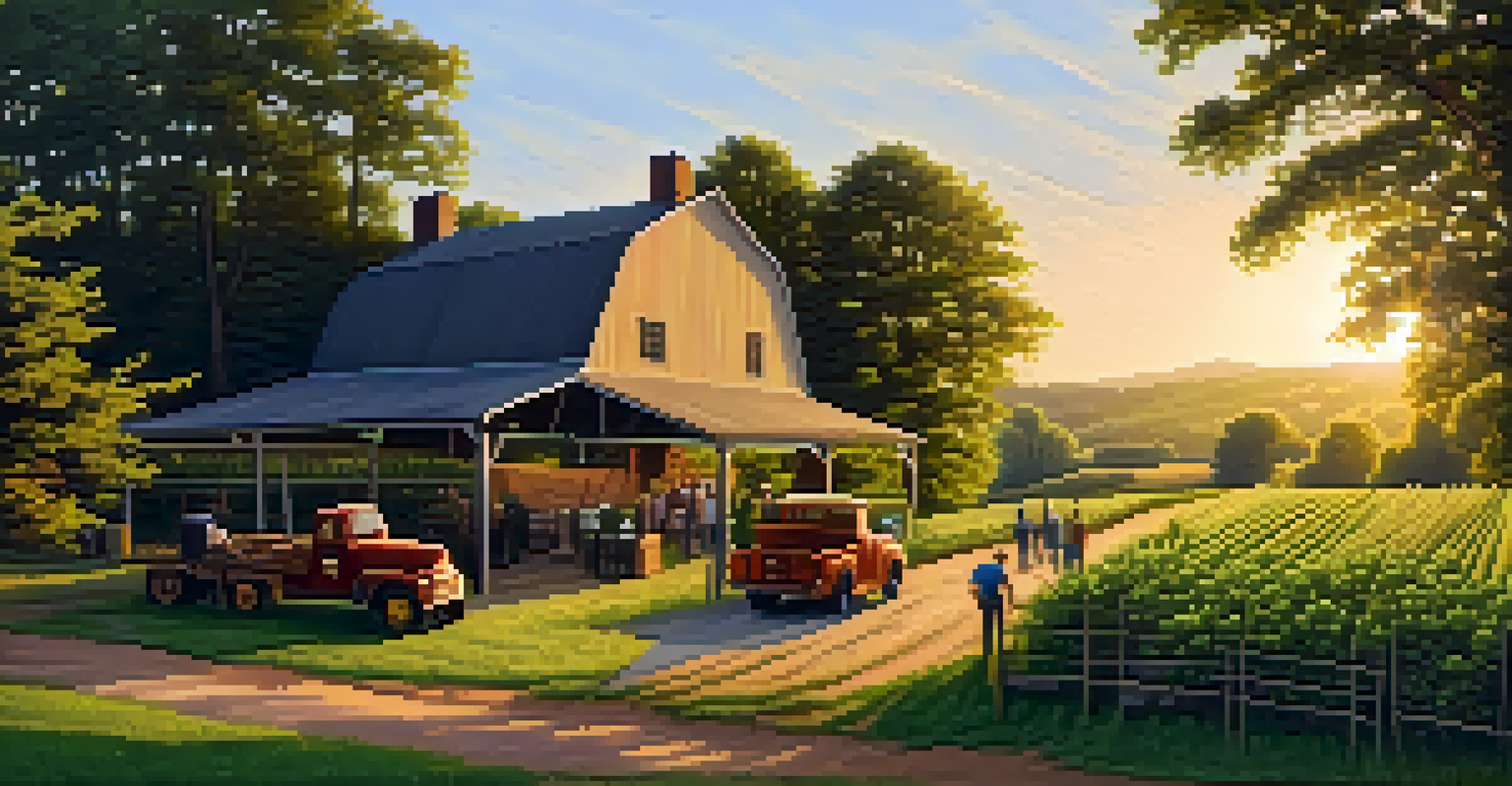Craft Distilleries: A Journey Through Local Spirit Culture

What Are Craft Distilleries and Their Impact?
Craft distilleries are small-scale producers of spirits, often focusing on quality and uniqueness. They emphasize traditional methods, using local ingredients to create distinct flavors that reflect their region's culture. These artisans are not just making drinks; they are telling stories through their spirits.
Good spirits can come from anywhere, but great spirits come from a sense of place.
The rise of craft distilleries has fostered a new appreciation for local production, encouraging consumers to support small businesses. This shift not only boosts local economies but also promotes sustainability by reducing the carbon footprint associated with transporting goods. It’s a win-win for everyone involved.
Moreover, craft distilleries often engage with their communities through events and tastings, further solidifying their role in local culture. They create spaces where people can learn about the distilling process, enjoy tastings, and connect over shared experiences. This community-centric approach adds a personal touch that large-scale producers often lack.
The Art of Distilling: Tradition Meets Innovation
At the heart of craft distilling lies a blend of traditional techniques and modern innovation. Distillers often draw inspiration from age-old methods while experimenting with new flavors and processes. This combination allows for a rich diversity of spirits that can cater to various palates.

For instance, while whiskey might be aged in charred oak barrels as per tradition, some craft distillers play with unique wood types or even add local herbs during the distillation process. This creative approach leads to unexpected flavor profiles that can surprise even the most seasoned connoisseurs.
Craft Distilleries Boost Local Economies
By sourcing local ingredients and engaging with communities, craft distilleries support small businesses and promote sustainability.
The art of distilling is a constant learning process, and many craft distillers are open about sharing their journey. They often host workshops and tours, inviting enthusiasts to witness the magic firsthand. This transparency not only demystifies the process but also builds a community of passionate supporters.
Local Ingredients: The Heart of Craft Spirits
One of the defining characteristics of craft distilleries is their emphasis on local ingredients. Many distillers source grains, fruits, and botanicals from nearby farms, ensuring freshness and supporting local agriculture. This farm-to-bottle approach enhances the flavor and quality of the spirits.
Craft distilling is about creating a community as much as it is about creating a product.
Using local ingredients also allows distillers to create products that truly reflect their region. For example, a distillery in a citrus-rich area might make a vibrant gin infused with locally sourced oranges. This connection to the land not only enriches the product but also builds a narrative that consumers can appreciate.
Furthermore, the commitment to local sourcing often extends to packaging and production practices. Many craft distilleries prioritize sustainability by using recyclable materials or minimizing waste. This conscientious approach resonates with consumers who are increasingly looking for brands that align with their values.
The Role of Community in Craft Distilling
Craft distilleries are more than just places to buy spirits; they are community hubs. Many distillers host events, tastings, and tours, inviting locals to experience their craft firsthand. These gatherings foster a sense of belonging and offer a platform for sharing stories and traditions.
Additionally, craft distilleries often collaborate with local businesses, such as restaurants and breweries, to create unique offerings. This collaborative spirit enriches the local culture, as it brings together different facets of the community. It’s not just about the spirits; it’s about building relationships.
Tradition and Innovation in Distilling
Craft distillers blend traditional techniques with modern innovation, creating unique spirits that cater to diverse palates.
The sense of community extends to consumers as well. When patrons support a local distillery, they become part of a larger story, one that celebrates craftsmanship and local heritage. This connection to place enhances the enjoyment of the spirits and makes each sip a shared experience.
Tasting Craft Spirits: A Journey for the Senses
Tasting craft spirits is an experience that engages all the senses. From the moment you pour a glass, the aroma wafts up, inviting you to explore its complexity. Paying attention to the color, smell, and texture can enhance your appreciation of the spirit's craftsmanship.
As you take a sip, try to identify the different flavor notes. Perhaps there’s a hint of citrus, a touch of spice, or a smoky finish. This process of tasting can be likened to savoring a fine wine, where the nuances tell a story of the ingredients and methods used in production.
For many, tasting becomes a social activity, shared among friends or at distillery events. This communal aspect adds to the enjoyment, as people share their thoughts and preferences. It’s a wonderful way to connect over something that’s both local and unique.
Craft Distilleries and the Trend of Sustainability
Sustainability is becoming a hallmark of many craft distilleries. As consumers grow more environmentally conscious, distillers are responding by adopting eco-friendly practices. From sourcing ingredients locally to using renewable energy in production, these efforts are reshaping the industry.
Some distilleries are even implementing zero-waste practices, ensuring that every part of the ingredient is utilized. For example, leftover grains from the distillation process might be used as animal feed, creating a closed-loop system. This commitment to sustainability not only benefits the environment but also strengthens the brand’s connection with its customers.
Sustainability Shapes Future Trends
As environmental consciousness rises, craft distilleries adopt eco-friendly practices, fostering loyalty among consumers who value social responsibility.
Moreover, consumers are increasingly drawn to brands that demonstrate social responsibility. When a distillery prioritizes sustainability, it resonates deeply with customers who want to make ethical choices. This alignment of values can lead to greater loyalty and support from the community.
The Future of Craft Distilling: Trends to Watch
As craft distilling continues to evolve, several trends are emerging that shape its future. One notable trend is the rise of flavored spirits, with distillers experimenting with unique infusions and botanical blends. This creativity not only attracts a broader audience but also revitalizes traditional spirits.
Another trend is the increasing focus on transparency and storytelling. Consumers want to know where their spirits come from, how they’re made, and the people behind them. Distilleries that share their journey and values tend to create deeper connections with their customers.

Lastly, the resurgence of local and regional spirits is likely to continue, with more distilleries popping up across the country. This growth will bring even more diversity to the market, offering enthusiasts an ever-expanding array of flavors and experiences. The craft distilling movement is not just a passing trend; it’s a vibrant culture that’s here to stay.